David Stairs
This article was suggested by Chris Stairs, who is also responsible for some of the photos
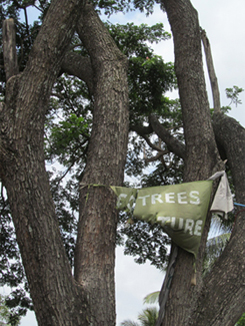
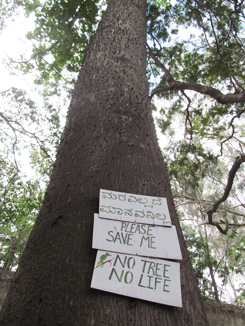
Urgent entreaties, Sankey Tank vicinity, Bangalore
Trees and diatoms, two of the things we most need to sequester CO2 and produce oxygen, one macro the other micro, are both under constant pressure from human activity. Global warming, ocean pollution, and deforestation are creating havoc, but do enough people care? And what are the attitudes toward trees in India?
We are told, for instance, that Siddhartha Gautama achieved enlightenment under a Bodhi tree (Ficus religiosa), but this is apochryphal in the same sense as George Washington chopping the cherry tree or Isaac Newton under the apple tree. Auroville claims to have planted 1.5 million trees in its reforestation efforts, but this is modest compared to Wangari Maathai’s Green Belt movement. Much of India’s original rainforest cover has been reduced, with a corresponding decrease in tiger populations, but this is to be expected, given India’s burgeoning population.
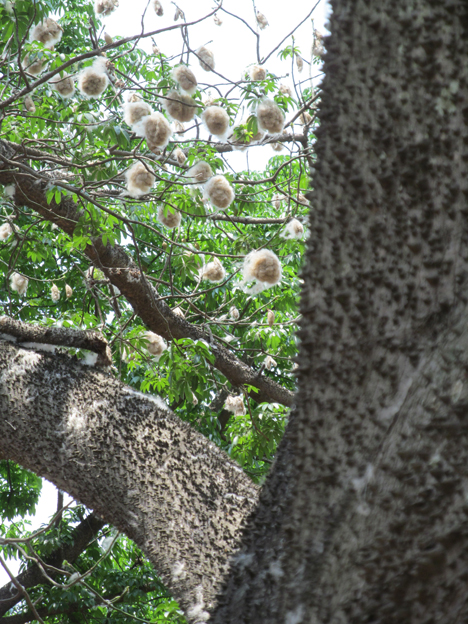
But Indians do respect trees and sponsor many botanical gardens. Tipu Sultan’s Lal Bagh garden in south central Bangalore is one example. Here one can find examples of trees from several continents, some of them splendid specimens like the white silk cotton tree (Bombax scopilorum), with its spiky branches and resident red ant population.
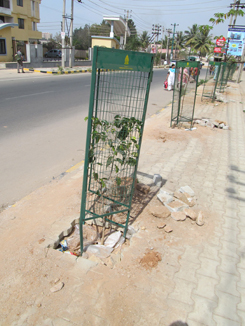

Tree preservation schemes, left urban, right rural
In both urban and rural areas Indians make an effort to protect new plantings. Tree guards in town may be made of metal, while rural examples might be made of bricks. Trees along thoroughfares are usually painted in red and white stripes, to protect both trees and drivers.
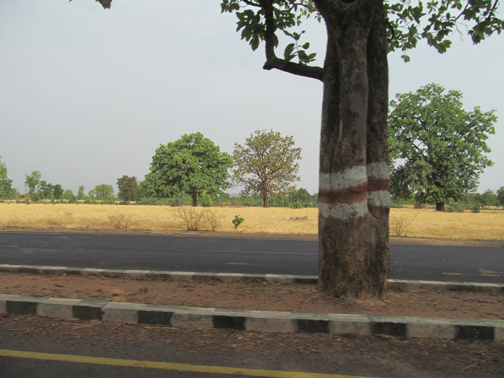
Large portions of India are hot and dry. In Madhya Pradesh, fields have a nearly golf-course manicured look. Understorey plants have been removed, but major trees, an excellent source of shade pools for animals and people alike, are preserved. These are deciduous trees as India has both hot and cool seasons, but is generally too far south to have conifers.
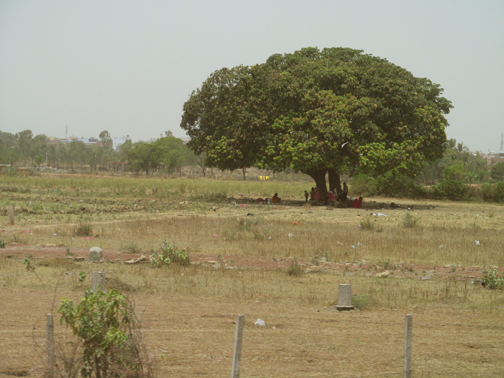
Rural trees provide valuable shade cover, Madhya Pradesh
Amazing efforts are made to preserve trees in the human environment. I’ve seen buildings and temples constructed around trees, trees perforating porches and floors, and trees squeezing through fencing like some larger-than-life bonsai.
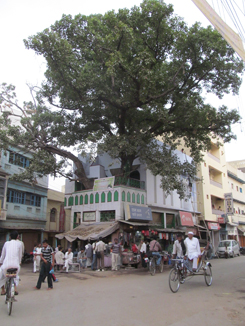
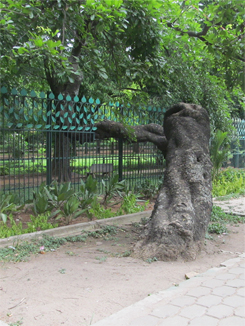
Bangalore, proud to be a garden city, preserves its tree-lined streets in many neighborhoods. Outside the room where I write in Mallesvaram, large Gulmohar trees (Delonix regia) bloom blazing red-orange, and are a major transit point for troops of migrating monkeys.
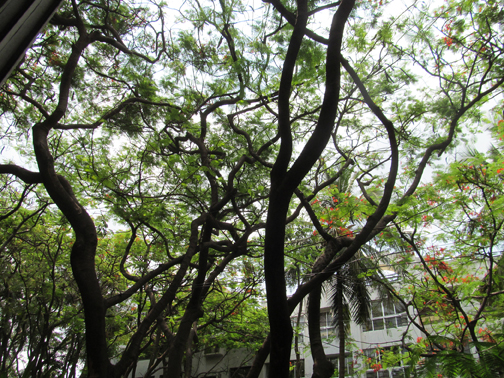
Although the banner that appears at the head of this column, found along Sankey Tank dike, is now worn and shredded, the sentiment is not an isolated one. Indians are connected enough to nature to appreciate the importance of the “Ents.”
David Stairs is the founding editor of Design-Altruism-Project











Leave a Reply
You must be logged in to post a comment.